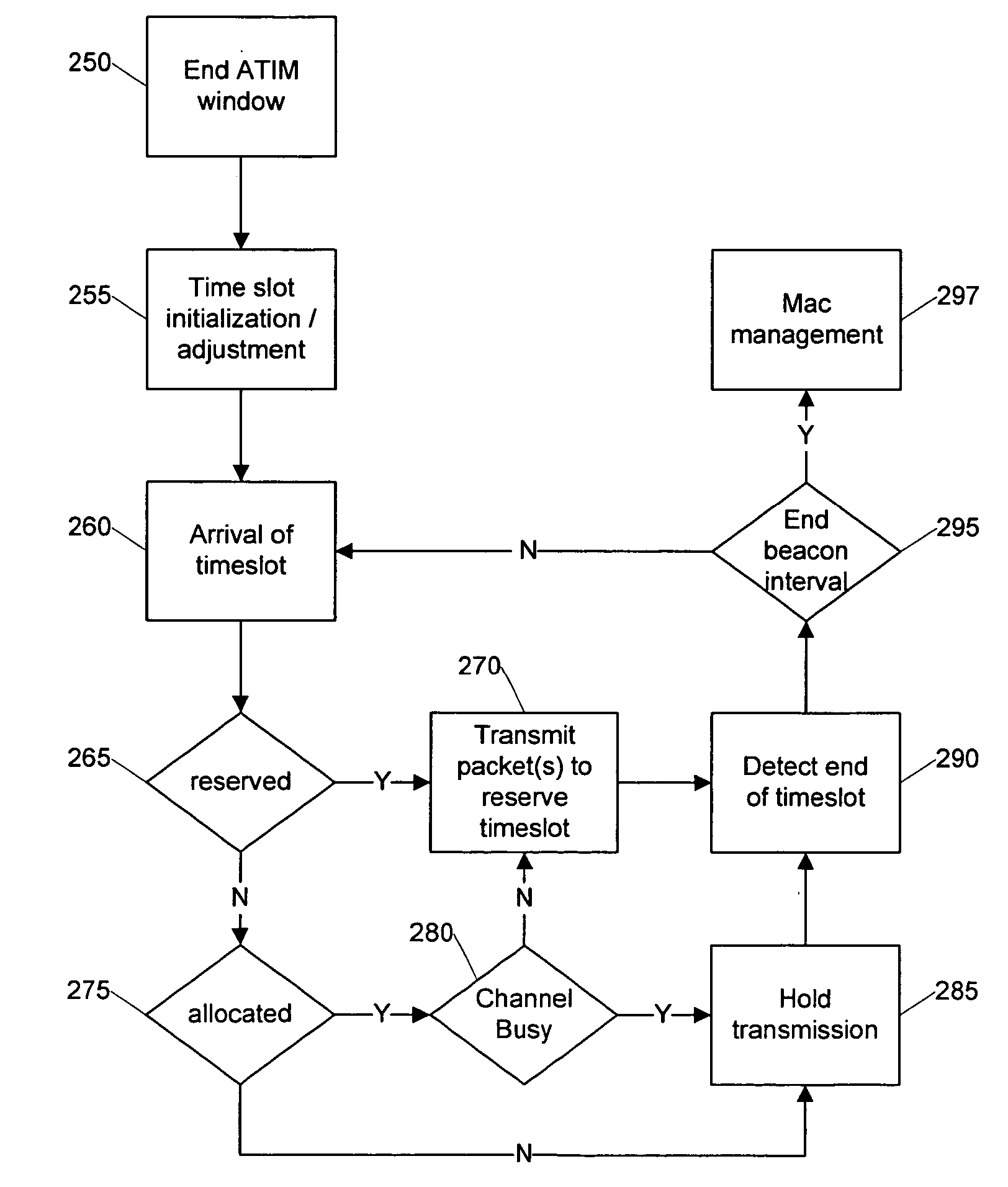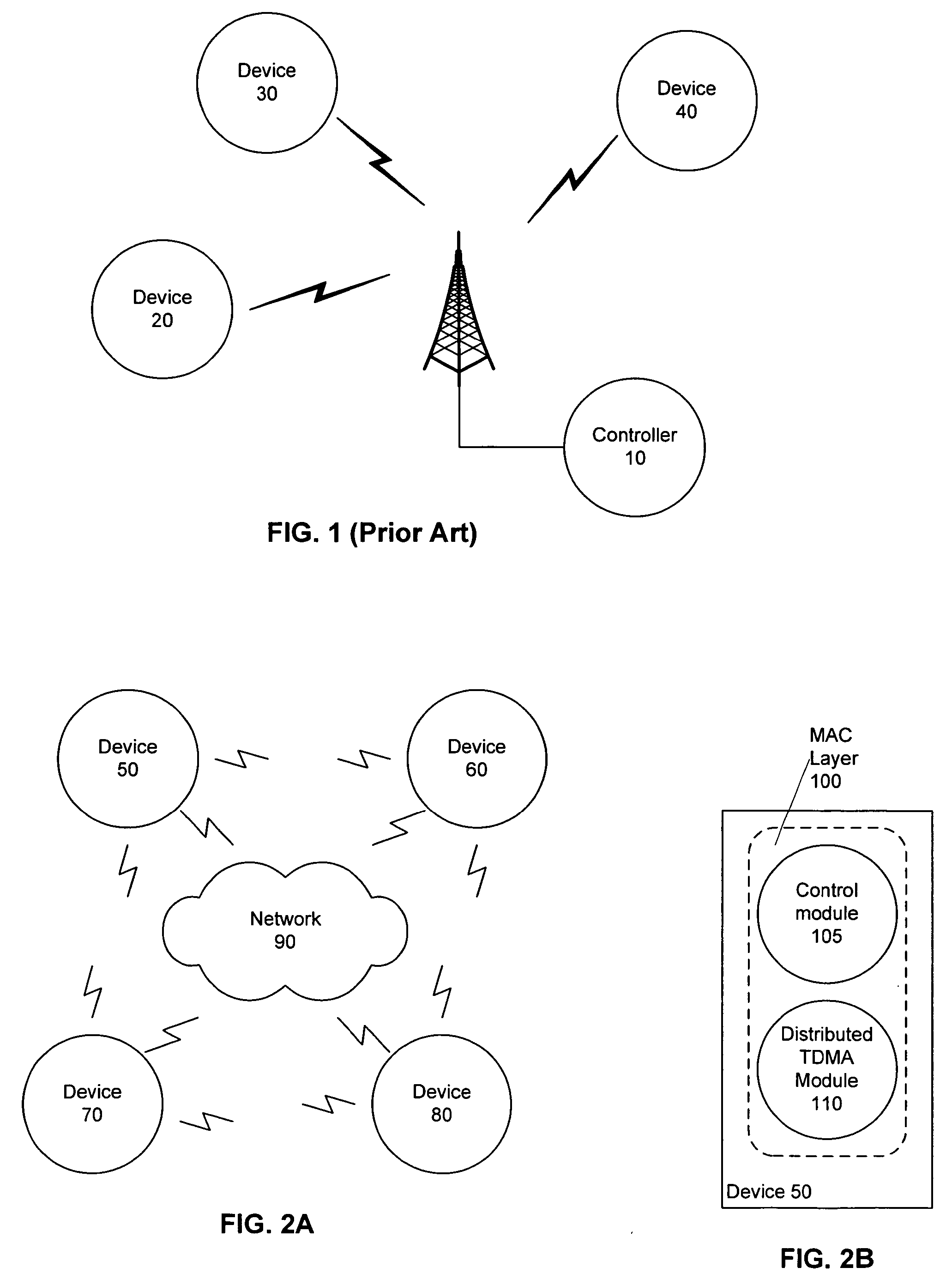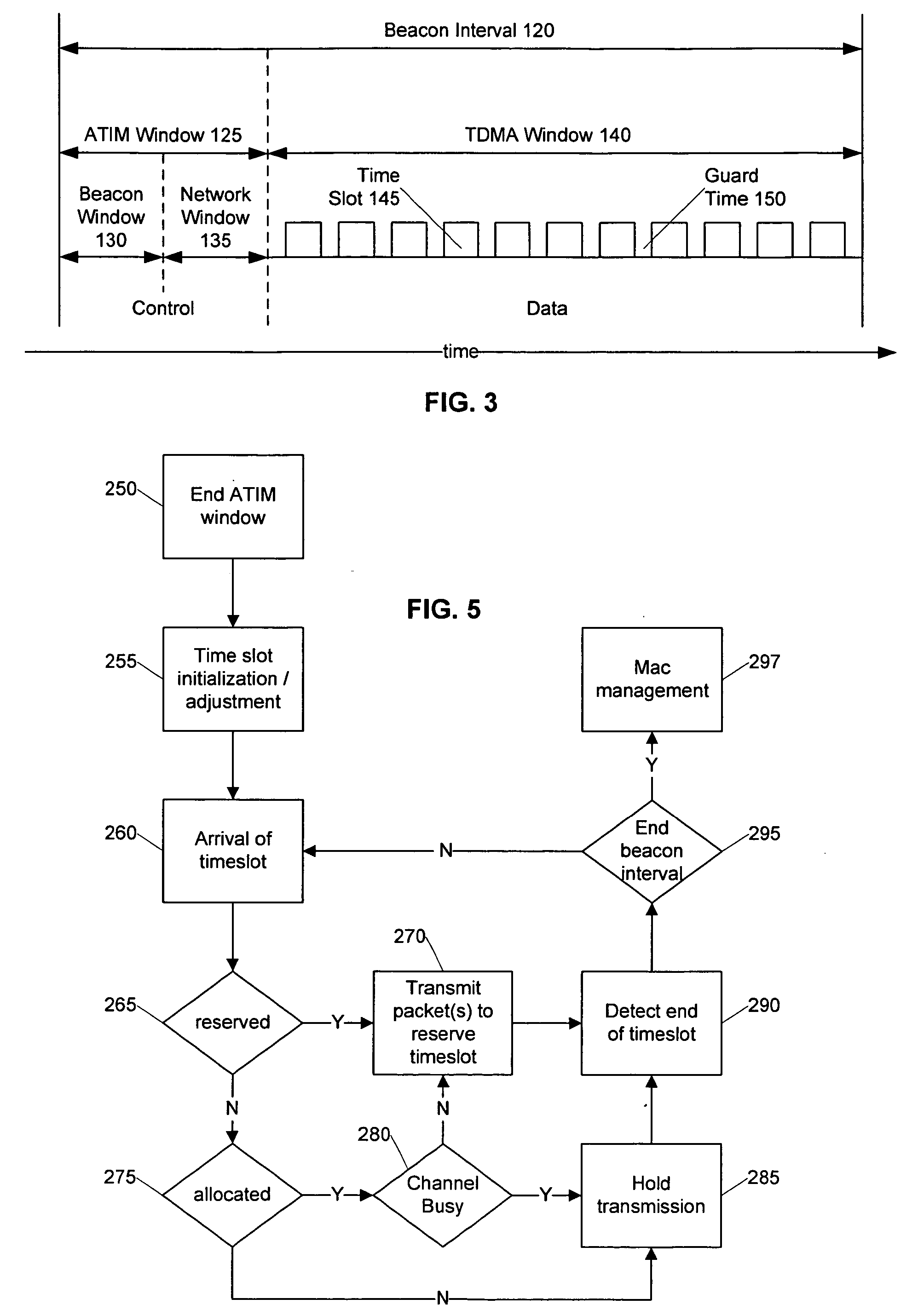Distributed TDMA for wireless mesh network
- Summary
- Abstract
- Description
- Claims
- Application Information
AI Technical Summary
Benefits of technology
Problems solved by technology
Method used
Image
Examples
Embodiment Construction
[0030] Certain embodiments disclosed herein provide for systems and methods for distributed TDMA communication between nodes of a wireless communication network. For example, one system as disclosed herein provides an enhanced MAC layer on a network device that is configured to join an FCM network in a wireless network and use distributed TDMA for communications. Additionally, one method as disclosed herein provides for a wireless device configured with an enhanced MAC to receive a beacon signal from a node in a wireless communication network and synchronize a local clock based on a timestamp in the beacon. The synchronized device then identifies one or more timeslots on one or more communication channels and uses the one or more timeslots to transmit. The synchronized device may also employ a routine to optimize the number of timeslots it reserves for transmitting based on its transmission buffer.
[0031] After reading this description it will become apparent to one skilled in the a...
PUM
 Login to View More
Login to View More Abstract
Description
Claims
Application Information
 Login to View More
Login to View More - R&D
- Intellectual Property
- Life Sciences
- Materials
- Tech Scout
- Unparalleled Data Quality
- Higher Quality Content
- 60% Fewer Hallucinations
Browse by: Latest US Patents, China's latest patents, Technical Efficacy Thesaurus, Application Domain, Technology Topic, Popular Technical Reports.
© 2025 PatSnap. All rights reserved.Legal|Privacy policy|Modern Slavery Act Transparency Statement|Sitemap|About US| Contact US: help@patsnap.com



